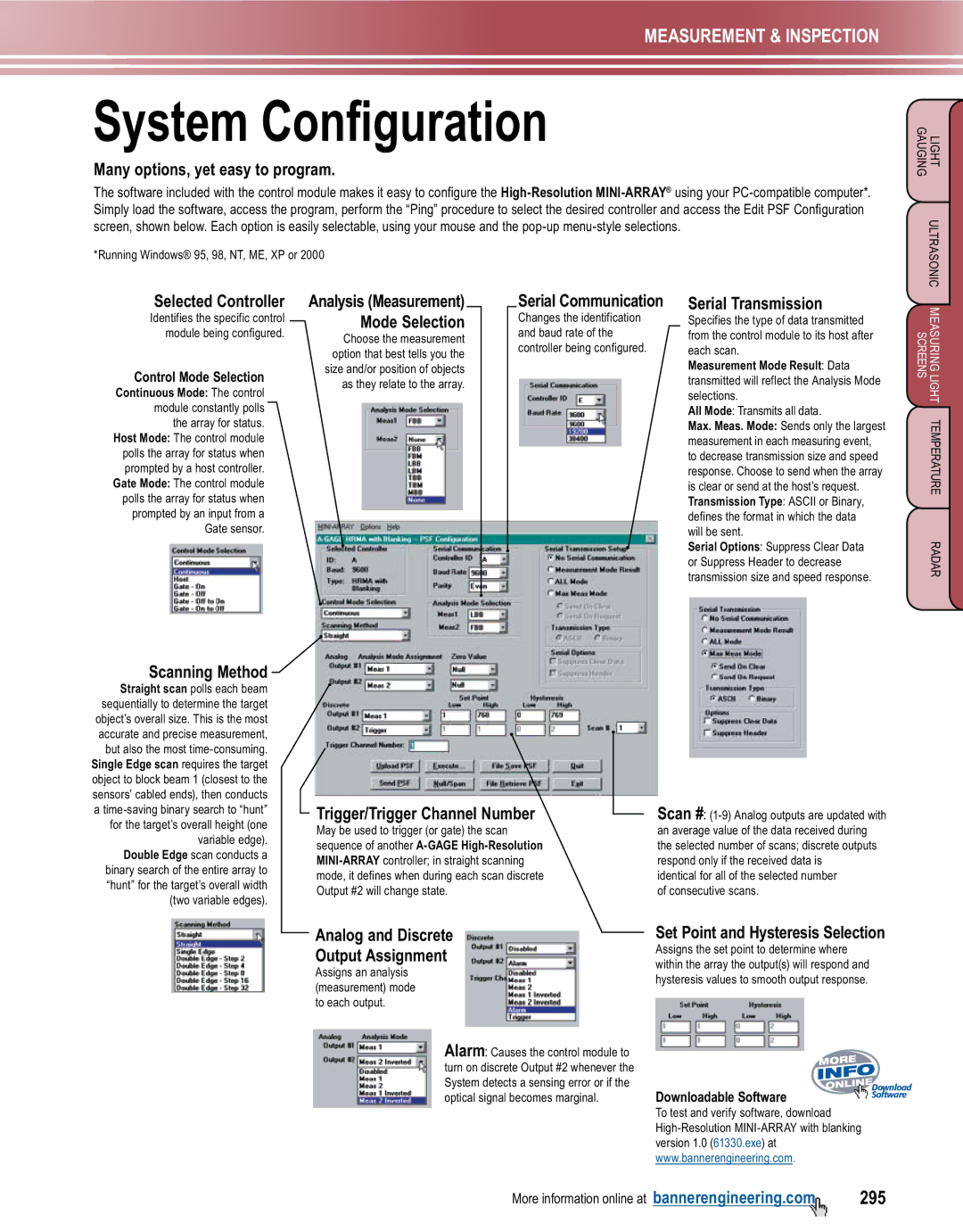
MEASUREMENT & INSPECTION
System Configuration
Many options, yet easy to program.
The software included with the control module makes it easy to configure the
*Running Windows® 95, 98, NT, ME, XP or 2000
LIGHT ULTRASONIC GAUGING
Selected Controller
Identifies the specific control module being configured.
Control Mode Selection
Continuous Mode: The control module constantly polls the array for status.
Host Mode: The control module polls the array for status when prompted by a host controller.
Gate Mode: The control module polls the array for status when prompted by an input from a Gate sensor.
Analysis (Measurement) Mode Selection
Choose the measurement option that best tells you the size and/or position of objects as they relate to the array.
Serial Communication
Changes the identification and baud rate of the controller being configured.
Serial Transmission
Specifies the type of data transmitted from the control module to its host after each scan.
Measurement Mode Result: Data transmitted will reflect the Analysis Mode selections.
All Mode: Transmits all data.
Max. Meas. Mode: Sends only the largest measurement in each measuring event, to decrease transmission size and speed response. Choose to send when the array is clear or send at the host’s request. Transmission Type: ASCII or Binary, defines the format in which the data
will be sent.
Serial Options: Suppress Clear Data or Suppress Header to decrease transmission size and speed response.
MEASURING LIGHT TEMPERATURE RADAR SCREENS
Scanning Method 
Straight scan polls each beam sequentially to determine the target object’s overall size. This is the most accurate and precise measurement, but also the most
a
Double Edge scan conducts a binary search of the entire array to “hunt” for the target’s overall width (two variable edges).
 Trigger/Trigger Channel Number
Trigger/Trigger Channel Number
May be used to trigger (or gate) the scan sequence of another
Analog and Discrete
Output Assignment
Scan #:
identical for all of the selected number of consecutive scans.
Set Point and Hysteresis Selection
Assigns the set point to determine where within the array the output(s) will respond and
Assigns an analysis (measurement) mode to each output.
Alarm: Causes the control module to turn on discrete Output #2 whenever the System detects a sensing error or if the optical signal becomes marginal.
hysteresis values to smooth output response.
Downloadable Software | Download |
Software |
To test and verify software, download
More information online at bannerengineering.com | 295 |
